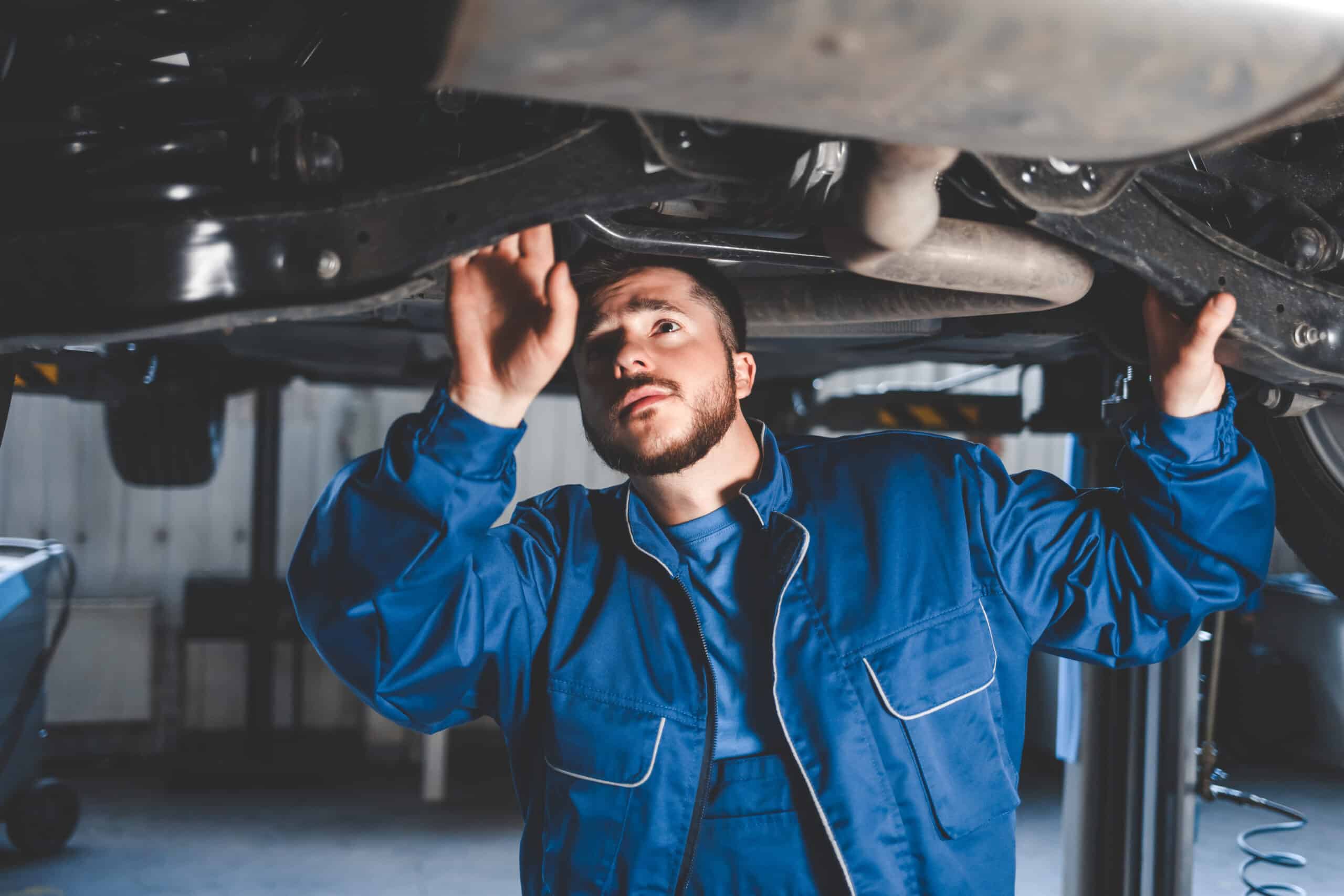You can’t drive a car without two distinct systems working together to keep it under control: steering and suspension. The suspension system is responsible for carrying your vehicle’s mass while also ensuring a comfortable ride and responsive handling on the road. You may maneuver your automobile in whatever direction you choose with the steering mechanism. As the car rides on top of the suspension, the steering system chooses the direction in which to go, and the car then follows that path.
But what exactly do these different systems do? When should you check these crucial components? How can you know whether either system has been compromised, and what causes that? Let’s find out.
The Steering System Explained
The major function of the steering system is to aid the driver in maintaining command of the vehicle’s direction and speed. The suspension is adjustable via the steering wheel, which is connected to the column via a series of pivoting joints. Therefore, the wheels may be raised and lowered as needed in response to the road’s surface without compromising the vehicle’s ability to steer. To illustrate, the system will ensure that the inside front wheel is slanted at a higher degree than the outside wheel while cornering. Since any slack in the joints might be fatal, fine-tuning the steering system is equally as crucial as fine-tuning the suspension.
The Suspension System Explained
Keeping the car’s frame attached to the wheels is the main job of the suspension. Both the driver and passengers will appreciate the smoother ride that results from this, as the shocks and other imperfections in the road are absorbed, and the vehicle’s traction is improved. Without a suspension system, the wheels would bounce in a straight line whenever they hit a bump on the road. If the car’s construction gains enough speed, it may be able to lift its wheels off the ground before the force of gravity brings it to crash down. Calibration of the springs and shocks making up the suspension system is essential for absorbing shocks.
The Point Of This Blog: When To Inspect These Systems?
When you reach significant vehicle benchmarks, it’s a good idea to have a look at your steering and suspension systems. Your car’s steering and suspension will wear out just like the rest of the parts and will require regular repair.
It is recommended that you do a thorough inspection of each of these systems after 50,000 miles (or about 81,000 kilometers) of driving. In addition, you must examine the systems once a year regardless of the mileage to find any underlying faults and make your car safer to drive. When you get your tires rotated, when you get your brakes serviced, when you get your oil and filters changed, if fluid leaks when you park, whenever these two systems are accessible during a routine check-up, and whenever your car shows any unusual control or handling characteristics, you should check the steering and suspension systems.
Furthermore, if you have front-end damage from an accident, such as bent or broken suspension components, you should inspect the complete steering and suspension system. If you detect a difference in your steering or suspension after an accident, make sure you have your systems serviced.
Why Should You Inspect The Steering And Suspension Systems?
Over time, the suspension and steering systems will become less effective due to normal driving and the effects of the surrounding environment. Some of the elements that can become brittle or worn down over time are the steering linkage, struts, shocks, control arm bushings, ball joints, and coil springs. When this happens, the vehicle’s handling becomes unsteady, the tires wear out rapidly, and the ride quality, steering responsiveness, and maneuverability all deteriorate as a result.
To prevent major problems that might leave you stuck somewhere, have a trusted mechanic repair inspect your vehicle’s steering and suspension regularly.
Conclusion
Clearly, we’ve established the fact that the car’s steering and suspension systems do a great deal to ensure your comfort and safety while driving by dampening the effects of bumps and dips in the road. To that end, when did you last get your automobile serviced? Has your vehicle started to veer to one side suddenly and without warning? Perhaps the wheel you’re turning seems a bit shaky? The problem might be with the car’s suspension or steering. Don’t put off getting a checkup for another moment!


